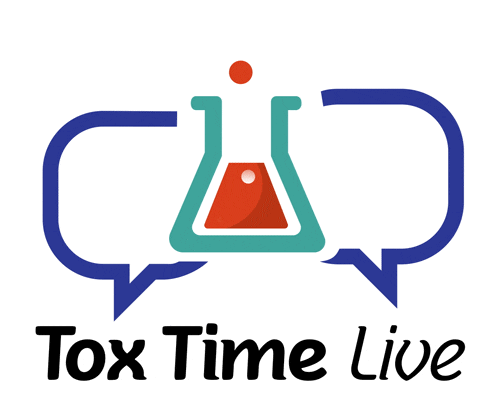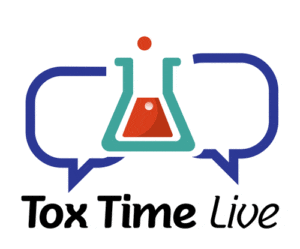Blog

Detecting Illicit Fentanyl in Newborns
Joseph Jones, Ph.D., NRCC-TC, Chief Operating Officer at USDTL discusses the toxicology of fentanyl in newborn umbilical cord tissue followed by a brief Q&A.
What You’ll Learn
- The advantages of using umbilical cord tissue for newborn toxicology.
- Does hospital-administered fentanyl show as positive at the 500 pg/g cutoff?
- What trends are we seeing with fentanyl in umbilical cord at USDTL?
- And more…
If you sign in and attend live, you will receive a Certificate of Attendance following the Webinar!
A recording will be made available for all registrants.
Click Here for the On-Demand Link to the Webinar.

Understanding Toxicology Reports: Confirmations, Cutoffs, and the Quantitative Values
Joseph Jones, Ph.D., NRCC-TC, Chief Operating Officer at USDTL discusses confirmations, cutoffs, and quantitative values followed by a brief Q&A.
What You’ll Learn
You’ll get answers to the following questions:
- Why is Confirmation Testing so Important?
- Qualitative vs Quantitative: What does it mean?
- What Are Cutoff Levels and Why do we Have Them?
- What Does the Quantitative Result on my Report Mean?
- And more…
Click Here for the On-Demand Link to the Webinar.

By Freepik© Studio
Over the past year, Fentanyl related overdose deaths have spiked amid the pandemic. Researchers have noticed the growing spread of street drugs laced with deadly synthetic opioids including fentanyl.
Dr. Nora Volkow, head of the National Institute of Drug Abuse, said people are often consuming fentanyl “unbeknownst to them,” resulting in a spike of overdose deaths. Most people are taking fentanyl unknowingly as it’s mixed with other drugs. Drug traffickers are mixing fentanyl with other drugs, including heroin, cocaine, methamphetamine, and MDMA, because it takes little to produce a high, making it a cheap option.
Riverside County District Attorney, Mike Hestrin, says fentanyl is “now in everything”. Hestrin explained that drug traffickers are using pill-making machines to create counterfeit drugs that look like prescription medications but actually contain fentanyl. He added that drug traffickers don’t have the sophisticated technology to accurately dose pills with non-lethal quantities of fentanyl, essentially leading to a game of Russian roulette.
The DEA explains on their website that unless a drug is prescribed by a licensed medical professional and dispensed by a legitimate pharmacy, you can’t know if it’s fake or legitimate. This leaves the user with the risk of a potentially lethal dose of fentanyl laced in their drug of choice.
References
- Fentanyl overdoses, deaths are up in Riverside County. Many don’t know they’ve taken it. (2021). https://www.desertsun.com/story/news/health/2021/07/30/fentanyl-overdoses-deaths-rise-riverside-county/8043736002/
- Facts about Fentanyl. United States Drug Enforcement Agency. (2020). https://www.dea.gov/resources/facts-about-fentanyl

USDTL hosted an online Webinar, titled ToxTime, where we discussed Newborn Alcohol Biomarkers.
The Webinar discussion included:
- What is FASD?
- The prevalence of FAS.
- The current methods available for detecting prenatal alcohol exposure.
- The importance of screening moms for alcohol.
- The importance of providers testing for alcohol, even if they do not have a direct plan of care for babies exposed to alcohol.
Click Here for the On-Demand Link to the Webinar.

Every quarter, USDTL publishes and sends out a newsletter. In it, there are company updates, our latest events, insider news, and much more. To view the Second Quarter newsletter from USDTL, you can access it here.
Click Here to Sign up for future emails to receive our newsletter.
USDTL is a proud member of The Women’s Business Enterprise National Council (WBENC). WBENC is a non-profit organization that is dedicated to helping women-owned business, like USDTL, thrive. As a member of WBENC, we have a mutual belief that diversity promotes innovation, open doors, and creates partnerships that help fuel the economy.
As a certified Women’s Business Enterprise, or WBE, USDTL went through a rigorous and stringent certification process to confirm that the business is owned, managed, and controlled by a woman or women. As a nationally certified WBE, we are able to network with other WBEs and collaborate with women-owned businesses to develop a mutually beneficial relationship.
To learn more about WBENC, visit https://www.wbenc.org/.

USDTL hosted an online Webinar, titled ToxTime, where we discussed Drug Trends and Concerns Regarding Neonatal Abstinence Syndrome (NAS).
The Webinar discussion included:
- A Brief Overview of NAS
- Withdrawal Symptoms
- Drug Withdrawal Variance
- USDTL Observations & Growing NAS Concerns
- Breaking the Stigma at Lily’s Place, a NAS Center
Click Here to View the Webinar
USDTL hosted an online Webinar, titled ToxTime, where we discussed Hair and Nail Testing – What’s the Difference?
The guest speaker was Joseph Jones, Ph.D., NRCC-TC, Chief Operating Officer at USDTL.
The webinar includes discussion around the following points:
- How Fingernail specimens can complement a hair testing program
- Using Fingernail as an alternative specimen type
- The difference in detection windows of Hair and Fingernail Specimens
- Case reports using both Hair and Fingernail specimens
- Drug Classes and Neurotransmitters: Amphetamine, Cocaine, and Hallucinogens
- Environmental Exposure Testing for Delta-8 THC, Delta-9 THC, Delta-10 THC, and CBD
- Bromazolam and Synthetic Benzodiazepines
- Winter Weather Delay Update
- Tianeptine
- Revolutionizing DUI Interventions: Wisconsin’s Breakthrough in Biomarker Testing for Impaired Drivers
- 3 FAQs You Should Know About Newborn Drug Testing
- The Brain Chemistry Behind Tolerance and Withdrawal
- March 2024 (1)
- February 2024 (1)
- January 2024 (3)
- December 2023 (1)
- November 2023 (1)
- August 2023 (1)


